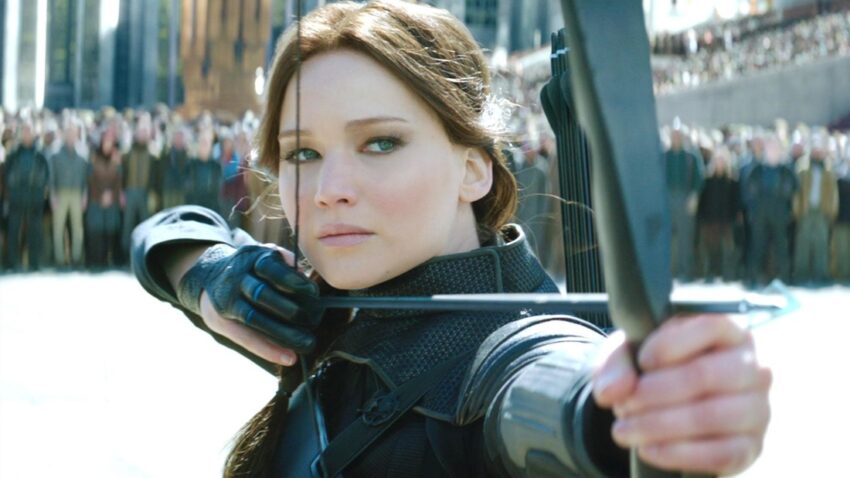I used to struggle a lot with character deaths. I would have a wide cast of characters spread out before me, know it was unrealistic to have them all make it out of the story alive, and then force myself to kill one or two of them in the climax.
But I always second-guessed myself.
What if it felt tacked-on? How could I make sure their deaths were meaningful? Would my readers be able to see the fact that I was just killing off characters at random?
I think we’ve all read books (particularly in the action-adventure, science fiction, and fantasy genres) where it feels like the author is killing off characters to make their book seem dark or gritty or so that the stakes feel real. They took a rather cheap route of making that happen. Instead of killing characters only when it’s absolutely necessary to progress a character’s arc, display a theme, or heighten the stakes, they kill off a few characters every time they want you to be scared and pray that it works.
And, due to a spoiler I received half-way through reading The Hunger Games books for the first time, I thought that trilogy might be another culprit.
So today we’re going to dive into The Hunger Games, look at what they did poorly when it comes to character deaths, along with what they absolutely nailed. And I have to warn you, there are some serious spoilers up ahead for the series, so if you haven’t read it, I highly recommend you go read the books before continuing.
I promise it’s worth it.
But for everyone else, let’s look at one of the most memorable deaths in The Hunger Games to understand exactly what gave it so much impact.
The Hunger Games
Katniss Everdeen — against her will — has been forced into the spotlight as the icon of a rebellion against a dystopian dictatorship. She’s a teenager who, for the last five years, has had to care for herself, her sister, and her mother who is crippled by disabling depression, a not-all-that-unusual story for those living in the districts suffering and close to starvation under the current regime.
In retaliation to her role in the rebellion, the government has destroyed her home, forcing her people into hiding, where they are planning a final strike against dictatorship by the third book. Katniss has come to realize if things stay how they are, she and the sister she has fought so hard to protect will end up dead. There is no way to escape unless they put everything on the line in a massive gamble that will cost hundreds, if not thousands, of lives to take down the government. If they stay where they are, they will starve.
So Katniss forces herself to take lives, to become the leader of a rebellion she never wanted to be a part of — all to protect her younger sister Prim.
It’s not the first time she’s risked something valuable for Prim. When Katniss was just eleven, she became the sole provider for their household, having to poach animals and sell them on the black market to put food on the table, risking arrest and torture if she’s caught. As a teenager, she took Prim’s place in the deadly Hunger Games that gave the series its name, fully convinced she would die in the arena. Now, she has become a renegade on the run from the government and a public figure in a rebellion, all because if she doesn’t, Prim’s life will be over.
All Prim wants out of life is simple — to heal the hurt that has been done to her family and her people. She can’t bear to take the life of anything, not even an animal. She dreams of being a healer someday, and insists on joining the healers already working for the rebellion, even though she’s only thirteen years old.
And then, in a bombing raid just before the end of rebellion, Prim is killed while trying to heal the rebel’s injured forces.
Katniss is devastated.
While the rest of the world celebrates, she is left unable to even grapple with Prim’s death. The grief is too great for her to even begin to deal with mourning. Her every desire, her entire motivation, each action was made to protect Prim. Without her, everything she’s done, all that she’s sacrificed, is gone.
And it is for that reason, when the time comes to decide how to punish the old regime, Katniss votes to force them to watch their family suffer, since they will never truly understand the weight of what they’ve done unless they have to watch someone they truly love endure it. Them suffering for their own wrongs is not enough. Nothing compares to watching an innocent suffer for the wrongs of another. Despite the pleas and arguments of those around her, Katniss is determined. There is nothing that will bring her closure except this.
For the entire trilogy, Katniss has fought tooth and nail — despite the urging of the vicious leaders of the rebellion — to keep from becoming those they are fighting. She refuses to give in and return cruelty to those who have caused so much suffering and pain, instead promising to show only justice to those who have wronged her and her people.
Now all of that has changed. With Prim’s death, the part of Katniss that wanted good and light in the world is gone. She will stop at nothing to bring vengeance on those who have hurt Prim, even if it destroys her moral compass, her friendships, and her identity because, to her, those things were already taken away from her when Prim was killed. She has become everything she once hated, and she doesn’t even care because none of it begins to compare to her grief for what was done to Prim.
And it isn’t until the very end of the series that any of this changes, that she is able to remember what true goodness is and recover an identity and a purpose beyond Prim.
Why This Death Matters
Prim’s death is far from the first in the series. When I first encountered the spoiler about it, I was irritated because so many other characters had already died. It seemed, at first, as though the author was just adding another death in case her readers became too happy with the protagonist overthrowing the government.
But when I read through the books, it was not that way at all.
Prim’s death was a beautifully written tragedy. It was intentional — and it is that intention that gave it meaning and elevated it from a cheap reminder that the stakes are high for the characters. It gave her entire character more meaning than being just another death tacked onto the story. It moved me to tears and made me understand why Katniss (if only briefly) became the embodiment of the villains she had sacrificed so much to end.
But not all the deaths in The Hunger Games are like Prim’s. Many more of them do come across as more of an after-thought, perhaps added because the author didn’t know what to do with the characters later on or felt like a particular scene did not illustrate how dangerous their situation was without another death.
So what makes the difference between the two?
As I mentioned before, the answer is intention. When a death does not have a clear purpose from a storyteller’s perspective, readers will be able to tell.. If it fails to progress a character arc, demonstrate your theme, or raise the stakes, let the character live and spare your readers another death that seems tacked-on or cheap.
There are three main purposes of a character death, and if your character death serves any of them, more likely than not it will have the impact and intention that you want it to.
1. Character Growth
This one is likely the most common option to be legitimate. If your character undeniably, irreversibly changes because of a death, it will have the sort of meaning that you want. If your character’s entire identity and purpose is altered (as it was for Katniss), it is likely your readers could not imagine your story without the death. So — as much as they might mourn the death or wish it could have gone a different way — they will realize that your character had meaning and that their death was not a random attempt by the author to make their book more gritty or dangerous. They will be able to see that there is a purpose and intention behind the death, even if the characters can’t see it themselves.
2. Display a Theme
This one is not as common, but no less legitimate. There are some themes that will be displayed most powerfully by a character’s death. Sometimes a character dies, and their death does not have a massive impact on the perspective or personality of the other characters, and yet it is no less important because it shows your reader a theme that they could not have gotten any other way.
However, there is a risk here, because if there is a more creative way to show your theme without a death, your readers will likely be able to sense that, and the death will begin to feel artificial. Before you know for sure that you are going to kill a character, consider if there is a better way to get across your theme that strikes your protagonist in a more personal way. The death of a close friend or family member is sad to anyone. But what tragedy would hurt your character in a unique way by targeting their specific goals, desires, and fears? How can you take a plot point and alter it to strike particularly at your character’s very core? A tragedy like that might even be more powerful than a death because it displays what makes your character unique and allows your reader to fully understand the weight of the tragedy because they see it through the perspective of your protagonist.
3. Raise the Stakes
This, out of the three of the options, is the most likely to be abused and the hardest to know when to use. The reason for this is that killing off a character is by far the easiest way to raise the stakes for your readers, but it’s rarely the most effective. More commonly, there are more creative solutions that don’t cheapen a character’s death while also emphasizing just how dangerous of a situation your characters are in. It is these solutions that will more accurately display what your characters have to lose without making it seem like you’re killing characters for no reason.
What if a family heirloom is destroyed? What if the place your protagonist has called home since he was a child is burned to the ground? What if your main character’s closest friend is kidnapped? What if a character — whether it’s your protagonist himself or one of his friends — is maimed or disabled?
These are just a few examples, and there are so many others to choose from based on genre, setting, and the individual desires and fears of your particular characters. Each can hurt your protagonist and show your readers that what she is dealing with is real without killing anyone. That way you can save your deaths for the most important scenes — the character arc that can’t happen any other way, the theme that will be most powerfully displayed when your character believes it through the death of someone she loves, or the stakes that must be communicated when your protagonist has lost everything but her friends.
At all costs, avoid having readers that feel betrayed by an author who kills off their favorite characters for no reason. Mistakes like that not only cheapen that individual character’s life and death, but also the stakes for the rest of your story and the deaths that are still to come.
So instead of coming at your characters deciding who to kill and who to keep, first approach your story as a whole, considering what would emphasize your character’s arc, your novel’s theme, or how you can make the stakes feel real. That will show your readers that each and every character death has intention and purpose, assuring them that you take their favorite characters’ deaths as seriously as you wrote about their lives.



Let us know in the comments:
What deaths have you read about that did feel tacked on? Did you feel that way about any in The Hunger Games trilogy?


Hi! My name is Mara, and I’m a Christian artist, violinist, and blogger. I remember the day that I decided that I would learn something new about what makes a good story from every book I picked up — whether it was good, bad, or a mixture of both. I use this blog as a way of sharing some of the tips and tricks I’ve learned, and highlight which books, cartoons, and movies have taught me the most about writing an awesome story.


These articles are great! They seriously make me want to go and write something. I’m going to come here whenever I get writer’s block 🙂
Bridge to Terabithia has to be one of the most emotional deaths I’ve read about… and it’s a classic. I was a bit disappointed at Beth from Good Wives, because it seemed like the author was just trying to keep down the happy-go-lucky air of the series. Not that I don’t love the books, of course!!! Maybe it’s just that that style of writing didn’t allow for as much character growth.
Thanks so much, Orla!
I loved the deaths in both of the stories you mentioned. I just reread through Little Women (again) this Spring and one thing that I hadn’t noticed until this time around was how Beth’s death was indispensable for Jo’s character development, as sad as it was. It really showed Jo’s strength and how much she had matured since the beginning of the series! I would agree that it definitely altered the mood, though. I think it gave Good Wives a much more solemn, darker air overall, which I can understand not liking compared to the more cheerful elements of the first book.
Thank you again for checking out the blog and commenting! We’d love to see you around again! 🙂